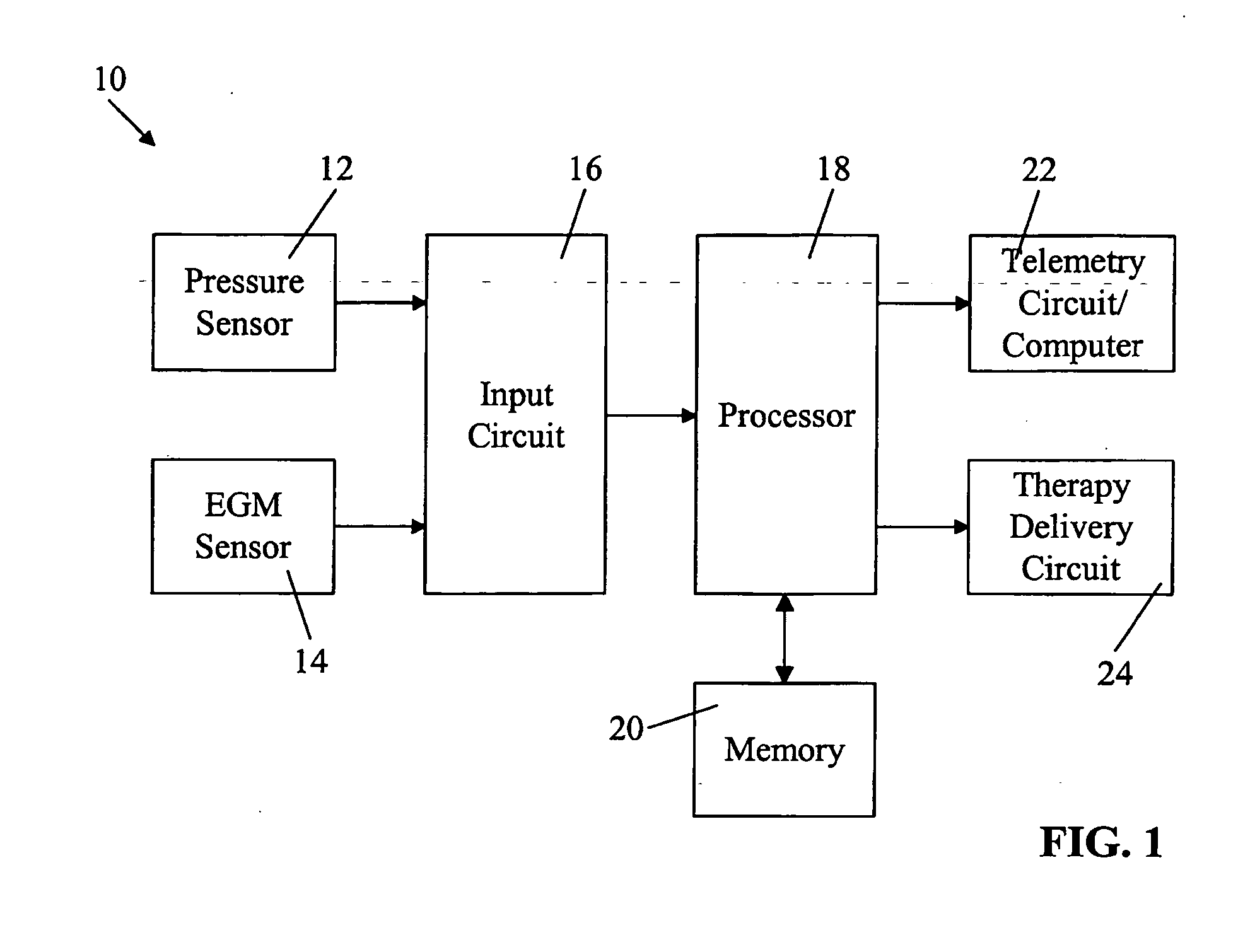System and method for monitoring a ventricular pressure index to predict worsening heart failure
a technology of ventricular pressure index and heart failure prediction, which is applied in the field of monitoring cardiac pressure, can solve the problems of weakened heart muscle that cannot pump blood efficiently to meet the demands of the body, increased blood pressure in the heart, and impaired circulation
- Summary
- Abstract
- Description
- Claims
- Application Information
AI Technical Summary
Benefits of technology
Problems solved by technology
Method used
Image
Examples
example 1
[0044]FIG. 4 is a graph illustrating the correspondence between the RV pressure index in a patient and the patient's heart failure status overtime. The patient was a sixty-seven year old male who had ideopathic cardiomyopathy diagnosed five years earlier. His past medical history included asthma and chronic heart failure. After two attempts of atrial cardioversions had failed, a CHRONICLE7 IHM was implanted in the patient. During the twelve months prior to implant, the patient was hospitalized three times for a total of twenty-three days.
[0045] The graph of FIG. 4 includes heart rate trend waveform 130, RV pulse pressure trend waveform 132, ePAD trend waveform 134, and RV pressure index trend waveform 136. Each waveform is plotted versus the number of days since the implant of the IHM. At time 138, which was fourteen days after the implant of the IHM, the patient was hospitalized in the dermatology department for vasculites on the lower legs. Nine days later, at time 140, the patie...
example 2
[0047] The present invention may also be used in a method to determine a desired pacing rate for a patient having an implanted artificial pacemaker. In one example of this method, a patient underwent a test of several programmed heart rates twelve days after his artificial pacemaker was implanted. In the seven days leading up to this test, the patient's pacemaker was programmed to 80 bpm. After ten minutes of rest and heart rate of 80 bpm, the patient was paced at:
[0048] 60 bpm for 2 minutes;
[0049] 70 bpm for 2 minutes;
[0050] 80 bpm for 2 minutes;
[0051] 90 bpm for 2 minutes;
[0052] 100 bpm for 2 minutes;
[0053] 110 bpm for 2 minutes;
[0054] 120 bpm for 2 minutes;
[0055] 130 bpm for 2 minutes; and
[0056] 80 bpm for 2 minutes.
[0057]FIG. 6 is a graph illustrating heart rate trend waveform 150, RV pulse pressure trend waveform 152, ePAD trend waveform 154, and RV pressure trend index 156 over time as the patient steps through the above pacing schedule. The patient's physicians can ...
PUM
 Login to View More
Login to View More Abstract
Description
Claims
Application Information
 Login to View More
Login to View More - R&D
- Intellectual Property
- Life Sciences
- Materials
- Tech Scout
- Unparalleled Data Quality
- Higher Quality Content
- 60% Fewer Hallucinations
Browse by: Latest US Patents, China's latest patents, Technical Efficacy Thesaurus, Application Domain, Technology Topic, Popular Technical Reports.
© 2025 PatSnap. All rights reserved.Legal|Privacy policy|Modern Slavery Act Transparency Statement|Sitemap|About US| Contact US: help@patsnap.com



